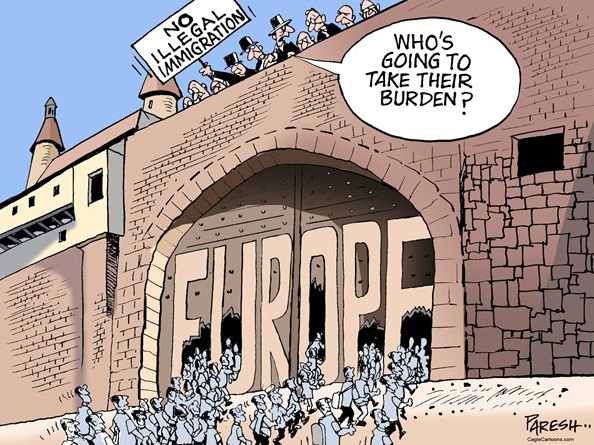The Rocky Road to Globalization
Patrick Kingsley writes: When you’re facing the world’s biggest refugee crisis since the second world war, it helps to have a sober debate about how to respond. But to do that, you need facts and data.
Far from being propelled by economic migrants, this crisis is mostly about refugees. Fleeing poverty is not considered by the international community as a good enough reason to move to another country. Whereas in fact, by the end of July, 62% of those who had reached Europe by boat this year were from Syria, Eritrea and Afghanistan, according to figures compiled by the UN. These are countries torn apart by war, dictatorial oppression, and religious extremism – and, in Syria’s case, all three. Their citizens almost always have the legal right to refuge in Europe. And if you add to the mix those coming from Darfur, Iraq, Somalia, and some parts of Nigeria – then the total proportion of migrants likely to qualify for asylum rises to well over 70%.
T
The migrants at Calais account for as little as 1% of those who have arrived in Europe so far this year. Estimates suggest that between 2,000-5,000 migrants have reached Calais.
Do migrants speed the collapse of the European social order? In reality, the number of migrants to have arrived so far this year (200,000) is so minuscule that it constitutes just 0.027% of Europe’s total population of 740 million. The world’s wealthiest continent can easily handle such a comparatively small influx.
The most obvious example is Lebanon, which is the-countries-with-the-most-refugees-per-1000-inhabitants. Lebanon is a country that is more than 100 times smaller than the EU has already taken in more than 50 times as many refugees as the EU will even consider resettling in the future.
This year, according to UN figures, 50% alone are from two non-African countries: Syria (38%) and Afghanistan (12%). When migrants from Pakistan, Iraq and Iran are added into the equation, it becomes clear that the number of African migrants is significantly less than half.
The EU opted to suspend full-scale maritime rescue operations in the Mediterranean in the belief that their presence was encouraging more migrants to risk the sea journey from Libya to Europe. In reality, people kept on coming. In fact, there was a 4% year-on-year increase during the months that the rescue missions were on hiatus. Over 27,800 tried the journey in 2015, or died in the attempt, until operations were reinstated in May, according to figures from the International Organisation for Migration. Only 26,740 tried it in 2014.
Is the solution to migration is to increase deportations? A billion has been blown on Europe-wide coordination efforts to secure European borders – money that could have been spent on integrating migrants into European society.
The proportion of refugees housed by developing countries in the past 10 years has risen, according to the UN, from 70% to 86%.

